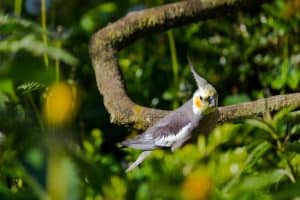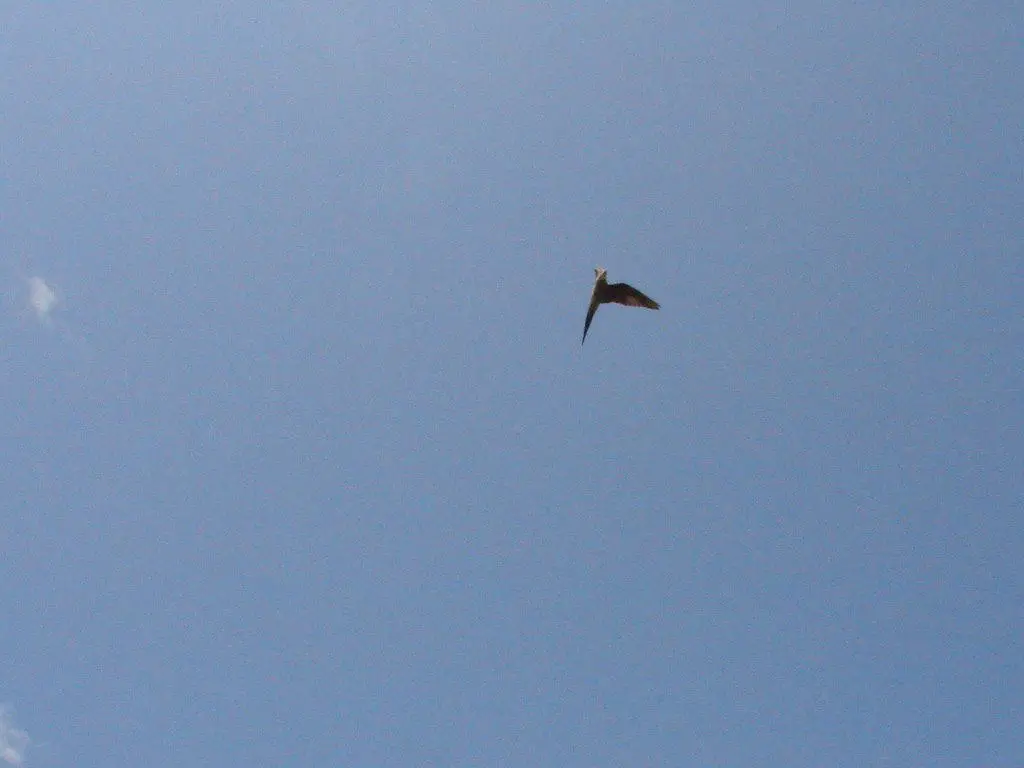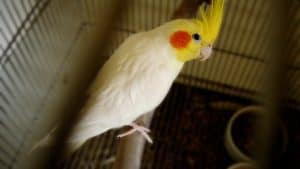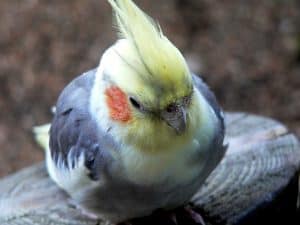Discovering your cockatiel has flown the coop can send you into a panic. I’ve been there, and trust me, knowing what to do when your cockatiel escapes is crucial to getting your feathered friend safely back home. It’s a time-sensitive situation, and every second counts.
From the immediate steps to long-term preventive measures, I’ll guide you through the essential actions to take. Don’t worry; with the right approach, you can increase the chances of a joyful reunion. Let’s dive into how you can effectively manage this stressful situation and ensure it doesn’t happen again.
What To Do When Your Cockatiel Escapes?
When your cockatiel escapes, it’s essential to act quickly to enhance your chances of bringing them back safely. Understanding the immediate actions to take forms the cornerstone of effective bird retrieval.

Check Your Surroundings
Immediately after you realize your cockatiel has flown away, I check the immediate area both inside and outside my house. It’s possible your bird hasn’t gone far. I look around common hiding places where a scared cockatiel might seek refuge. These include nearby trees or shrubs, on top of doors, or under furniture.
Your bird may also return to spots near their cage. If your cockatiel likes certain rooms or has favorite perches, checking these areas thoroughly will help you catch them more quickly if they are just hiding.
Use Familiar Sounds
I have found that using sounds familiar to my cockatiel significantly increases the chances of their return. I usually play recordings of their calls or the general sounds from their cage environment. Sometimes I mimic their chirping or call them by name.
This method often lures them back, especially if the bird is still close by. If they hear my voice or familiar sounds, they realize it’s safe, and it might prompt them to come toward the sound or give a response call.
Strategies to Attract Your Cockatiel
Once your cockatiel escapes, it’s crucial to act swiftly to maximize your chance of getting your bird back safely. Here, I’ll share effective strategies to entice your pet home.
Bringing the Cage Outside
Placing the bird’s cage outside can play a pivotal role in bringing your escaped cockatiel back home. Firstly, ensure the cage is in a visible spot where your bird flew away or is familiar. Visibility helps the cockatiel recognize its home from afar.
Additionally, make the cage inviting by adding your bird’s favorite toys and ample food. Familiar items and the sight of food can lure your cockatiel back to the safe confines of its cage. Open the cage door, facilitating easy entry when your bird returns.
Calling Your Bird by Name
Calling your cockatiel by name might help if it hasn’t strayed too far. Standing near the cage, call out with a calm and steady voice. Your familiar voice can provide comfort and a sense of security, which might encourage your bird flies back to you. Repeat the name and any familiar phrases your cockatiel associates with positive experiences, such as “time to eat” or “good bird.” Consistency is key, so keep calling for at least several minutes during each attempt to increase the likelihood of your pet hearing you.
Seeking Community Assistance
In the quest to recover lost birds who is possibly flying with the wild birds, leveraging community resources significantly enhances the probability of locating your missing bird. Engaging your neighbors and utilizing online platforms can extend your search effort considerably.
Notify Your Neighbors
Informing neighbors plays a crucial role when searching for a lost cockatiel. I recommend visiting each neighbor to inform them personally about the escape. It’s effective to provide a description of your pet bird, its name, and any familiar sounds it responds to.
I also suggest handing out flyers with a picture of the cockatiel, your contact information, and any details about its favorite foods or distinctive behaviors. This way, if neighbors spot the bird in nearby trees or their yard, they know exactly how to contact you or possibly aid in safely retrieving the cockatiel.
Post on Social Media and Community Boards
Using social media platforms and community boards offers a swift method to spread the word about your missing bird. I advise posting on local community groups on Facebook, Nextdoor, and even Instagram, using hashtags like #LostBird, #PetBird, and #LostCockatiel. Include a clear, recent photo of your cockatiel, a brief description, and where it was last seen.
Engaging with local bird clubs and pet stores through these posts can also be beneficial; members often have extensive networks and can be vigilant in helping you locate your missing pet. Additionally, setting up digital flyers on community boards captures the attention of those who may not be active on social media but frequent communal areas like libraries or cafes.
Prevention and Safety Measures
Having discussed strategies to attract a lost cockatiel and engage community support, focusing on prevention and safety measures is equally crucial. These strategies can significantly reduce the likelihood of your cockatiel escaping.

Securing the Cage
One of my first recommendations involves ensuring the security of the bird’s cage. A secure cage not only prevents escapes but also safeguards your pet bird from other dangers such as predators:
- Inspect Latches: Regularly check the cage’s latches to confirm they are functioning correctly and secure. Faulty latches are often the simplest ways for a cockatiel to escape.
- Double Door Boundary: Utilizing a double door system on the cage can provide an extra layer of security. If the inner door is accidentally left open, the outer door still serves as a barrier.
- Examine for Gaps: Over time, cages might develop small gaps where the bars meet the frame. I regularly inspect these points to prevent my cockatiel from squeezing through.
Training and Routine Checks
Training your cockatiel and performing routine checks are essential components of pet bird safety:
- Routine Cage Checks: I make it a practice to routinely inspect the entire structure of the cage for any signs of wear or potential escape points. This includes looking for loose bars or corroded areas.
- Regular Training Sessions: Train your cockatiel to respond to calls or to return to the cage on command. Positive reinforcement techniques, like treats and praises, can be highly effective.
- Familiar Sounds: Keep your cockatiel familiar with certain sounds or calls unique to your home. This familiarity can help in situations where the bird might be lost but still within earshot.
Implementing these preventive measures significantly enhances the safety of your cockatiel and could spare you the distress associated with a pet bird escape.
Losing a cockatiel can be a distressing experience but taking proactive steps and utilizing community resources can significantly increase your chances of getting your feathered friend back. Remember the importance of prevention—it’s always better to be safe than sorry.
By implementing the recommended safety measures and staying vigilant you can help ensure your cockatiel remains safe and secure in your home. Here’s hoping your pet stays within cozy confines but if they ever do take an unexpected flight you’re now better prepared to bring them back safely.
Frequently Asked Questions
Will cockatiels fly back home?
Cockatiels might not fly back home on their own due to their limited homing instincts. Instead, they tend to fly further away when frightened. Immediate action is essential to increase the chances of recovery.
What to do when you can’t find your bird?
Begin by informing your neighbors and asking them to keep an eye open. Next, leave an open cage with food nearby as a familiar refuge. Don’t forget to contact local vets, rescue services, and use social media to spread the word.
How do you lure a bird back into a cage?
Place your bird’s favorite food inside the cage and use a combination of hand gestures and verbal cues to attract it. Commonly, tapping the cage and saying specific commands like “In the cage” can help coax it back.
What happens to pet birds that escape?
Escaped pet birds can travel significant distances, sometimes found miles away from their home. They might also face threats from wild animals and might not be able to return on their own.
How do I find my lost cockatiel bird?
Set out a cage with familiar food such as seed treats or millet spray. Additionally, use sound cues or display another bird, if possible, to attract your lost bird. Extending your search area and involving professionals or community help can also be beneficial.
If you’re a devoted cockatiel owner seeking to improve your pet’s well-being, these insightful articles are a must-read. Start with “The Best Plants for Cockatiel Cages” to create a safe and stimulating environment for your bird.
For nutritional advice, check out “Can Cockatiels Eat Bean Sprouts?” and “Can Cockatiels Eat Leeks?.” Address potential hazards by reading “Can Cockatiels Eat Newspaper?” and learn about the risks of paint fumes in “Are Paint Fumes Bad for Cockatiels?.” Each article offers valuable insights to ensure your cockatiel remains happy and healthy.




